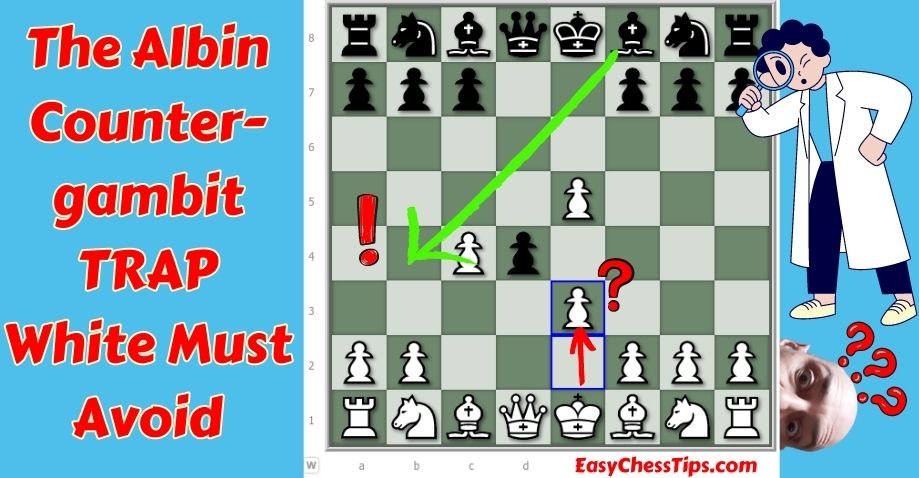
This is the second of my two-part mini series about the Albin Countergambit, based on a blitz game I played on Gameknot.com a few days ago.
In this video I go through the first few moves of the Albin Countergambit, which is a “counter gambit” to the Queen’s Gambit.
Next, I draw your attention to a trap that White must avoid on the 7th move and 8th moves.
The second half of the video looks at the Stockfish computer analysis of the blitz game that I played in the video that’s embedded in my previous blog post: easychesstips.com/what-3-be6-in-the-albin-countergambit
And here is the 2nd video in the mini-series:
The Albin Countergambit
Here are the opening moves of the Albin Countergambit, as expounded by John Watson in his book, A Strategic Chess Opening Repertoire for White (pp. 54-55):
- d4 d5
- c4 e5
- dxe5 d4
- Nf3 Nc6
- Nbd2 …
As can be seen, the point of the Albin Countergambit is for Black to advance his d-pawn to d4.
Against an inexperienced player, that could lead to a nasty little trap that White needs to avoid…
The Trap That White Must Avoid Falling Into
If, instead playing 4. Nf3 White tries to attack the d-pawn by advancing his pawn to e3, he can get himself into all sorts of trouble.
- d4 d5
- c4 e5
- dxe5 d4
- e3? B4+!
- Bd2? dxe3!
- Bxb4?? exf7+!
- Kxf7?? Qxd1!
Bye bye, Queen!
In the video I discovered that on the 7th move, if White plays Ke2 to protect the Queen, Black maintains a winning advantage by promoting the pawn to a Knight and checking the King, rather than promoting to a Queen with no check. Indeed, if Black plays 7… fxg1Q, then White can fight back to equality. Find out how in the video!
Cheers!
David Hurley
#pubchessbluffer
Check out Gameknot and play for FREE at: https://gameknot.com/#hirohurl (Search for “hirohurl” when you join, and challenge me to a game!)